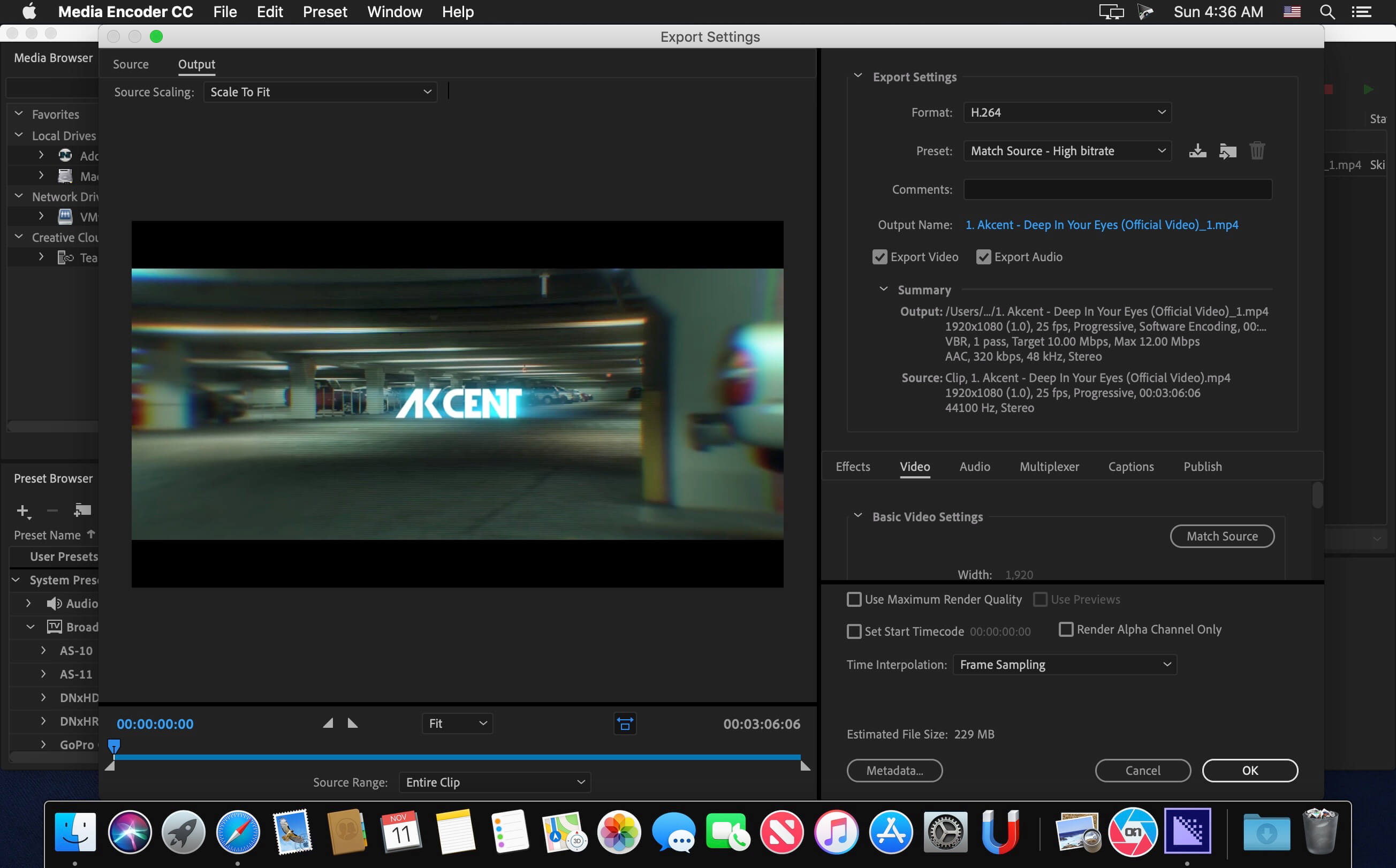

- #5dtorgb vs adobe media encoder movie
- #5dtorgb vs adobe media encoder software
- #5dtorgb vs adobe media encoder Offline
- #5dtorgb vs adobe media encoder tv
#5dtorgb vs adobe media encoder tv
I haven’t tried 5DtoRGB yet, because it is supposed to be a very slow conversion and most TV projects don’t warrant the added quality it may offer. I have tried the various encoders, like Compressor or Grinder, but in the end have come back to MPEG Streamclip. Avid editors may choose to use an Avid DNxHD codec instead. Generally, I will use ProResLT, however, if there is really a quality concern, because the project may go through more heavy post, then use standard ProRes or ProResHQ. I prefer to organize these files outside of the NLE and get them into a codec that’s easy to deal with using just about any editing or compositing application.
#5dtorgb vs adobe media encoder movie
Yes, various NLEs can natively work with the camera’s H.264 movie files, but I still find this native performance to be sluggish. Once that’s out of the way, the first thing I do with files from a Canon 5D or 7D is convert them to the Apple ProRes codec. This is your “negative” and you ALWAYS want to preserve it in its original and UNALTERED form. One application to consider for this purpose is Videotoolshed’s Offloader. Here is a step-by-step strategy for working with HDSLR footage, specifically from Canon 5D/7D/1D HDLSR cameras.īefore doing anything with the camera files, it is IMPERATIVE that you clone the camera cards. Many of the early post issues, like the need to convert frame rates, are now behind us. To date, I have edited about 40 spots and short-form videos that were all shot using the Canon EOS 5D Mark II. In six months, the post workflows might once again change.


Nikon is coming on strong with its D7000 and Panasonic has made a serious entry into the large-format-sensor video camera market with its Micro 4/3” AG-AF100. The Canon cameras are the dominant choice, but that’s for today. To some extend this is a “refresh” of the Round II article, given the things I’ve learned since then. Although some of this information will seem redundant with earlier articles ( here and here), I decided it was a good time to set down a working recipe of how I like to deal with these files. In my research around the web I've read some positive feedback regarding Adobe Media Encoder my own tests yielded good results with MPEG Streamclip but AVID editors seem to swear by transcoding within AVID MC.The interest in HDSLR production and post shows no sign of waning. I have to transcode my entire project to DNxHD, so which application would you recommend for transcoding a batch of say 170 clips (avg 3.0GB per clip) so that I could then link via AMA and edit smoothly in AVID MC6? I've used everything from Compressor, Media Cleaner, MPEG Streamclip and Sorenson Squeeze to Aimersoft Video Converter, Grinder, 5DtoRGB and Adobe Media Encoder so my history tells me NOT to transcode my media via my NLE application.
#5dtorgb vs adobe media encoder software
I've generally tried to use software to do what the software was designed for.what I mean specifically is that I try to use edit applications for editing and compression software for compression/transcoding etc. Thanks for the further clarification! so another question for you guys. (Note that 10-bit is even more compressed because while you are 10-bit, the data rate is the same as the 8-bit codec.) Most people using 29.97 or 59.94 projects find DNxHD 145 to be just fine, but you could also use 220 or 220x (10-bit) if you want. You can also pick whatever resolution you want, based on the amount of disk space and footage you have. I would certainly recommend the second method, and you'll have to decide whether you want to transcode or start editing immediately. This will create new files, but only the scenes you used (plus user-defined handles). The advantage is that when you are done, you can take your finished sequence, relink to your AMA files, and then re-transcode at a higher resolution. Most people, after they Link, will TRANSCODE which will convert the AMA material into Avid MXF media at a desired resolution. It also is more cumbersome to edit, since your CPU has to deal with every frame in real-time to make it a more editor-friendly format.
#5dtorgb vs adobe media encoder Offline
Avid does not manage your media, so the chance of it going offline is more likely. When you LINK TO AMA, you work with the footage in its native format. This is the historical method of using files in Avid. But that means the entire clip must be re-imported, even if only a few seconds were used in your sequence. Then, if a new resolution is needed, you need to Batch Import the necessary clips at the higher resolution. Files are converted to Avid MXF media at a defined resolution and managed by Avid. IMPORT refers to using the File > Import method to use media. Just so you understand, you're kind of mixing your terminology here.


 0 kommentar(er)
0 kommentar(er)
